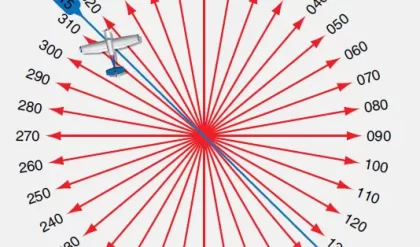When a venturi meter is placed in a pipe carrying the fluid whose flow rate is to be measured, a pressure drop occurs between the entrance and throat of the venturi meter. This pressure drop is measured using a differential pressure sensor and when calibrated this pressure drop becomes a measure of flow rate.
The following are the main parts and areas of venture meter:
1. The entry of the venture is cylindrical in shape to match the size of the pipe through which fluid flows. This enables the venture to be fitted to the pipe.
2. After the entry, there is a converging conical section with an included angle of 19’ to 23’.
3. Following the converging section, there is a cylindrical section with minimum area called as the throat.
4. After the throat, there is a diverging conical section with an included angle of 5’ to 15’.
5. Openings are provided at the entry and throat (at sections 1 and 2 in the diagram) of the venturi meter for attaching a differential pressure sensor (u-tube manometer, differential pressure gauge, etc) as shown in diagram.

1. The fluid whose flow rate is to be measured enters the entry section of the venturi meter with a pressure P1.
2. As the fluid from the entry section of venturi meter flows into the converging section, its pressure keeps on reducing and attains a minimum value P2 when it enters the throat. That is, in the throat, the fluid pressure P2 will be minimum.
3. The differential pressure sensor attached between the entry and throat section of the venturi meter records the pressure difference(P1-P2) which becomes an indication of the flow rate of the fluid through the pipe when calibrated.
4. The diverging section has been provided to enable the fluid to regain its pressure and hence its kinetic energy. Lesser the angle of the diverging section, greater is the recovery.
1. It is used where high pressure recovery is required.
2. Can be used for measuring flow rates of water,gases,suspended solids, slurries and dirty liquids.
3. Can be used to measure high flow rates in pipes having diameters in a few meters.
1. Less chances of getting clogged with sediments
2. Coefficient of discharge is high.
3. Its behaviour can be predicted perfectly.
4. Can be installed vertically, horizontally or inclined.
● They are large in size and hence where space is limited, they cannot be used.
● Expensive initial cost, installation and maintenance.
● Require long laying length. That is, the venturi meter has to be proceeded by a straight pipe which is free from fittings and misalignments to avoid turbulence in flow, for satisfactory operation. Therefore, straightening vanes are a must.
● Cannot be used in pipes below 7.5cm diameter.





Comments are closed.